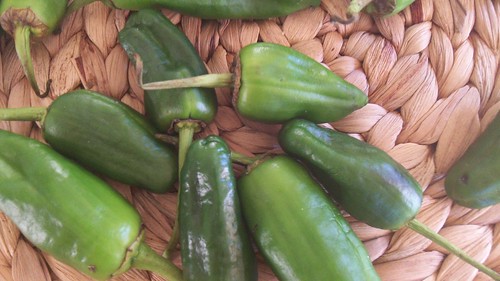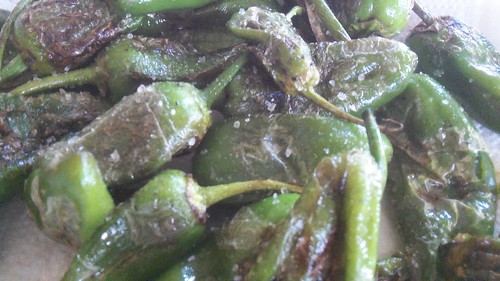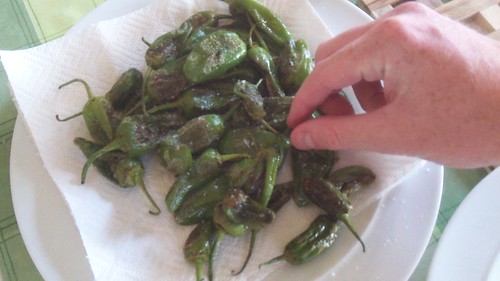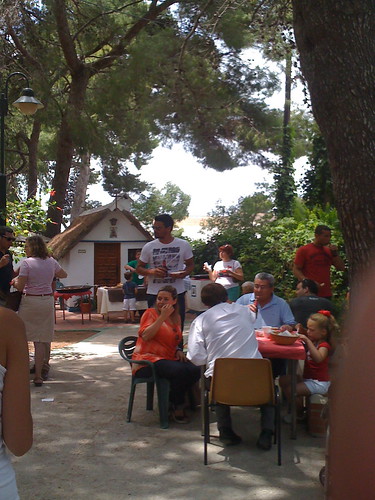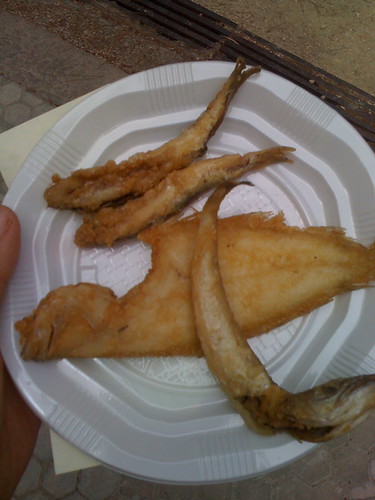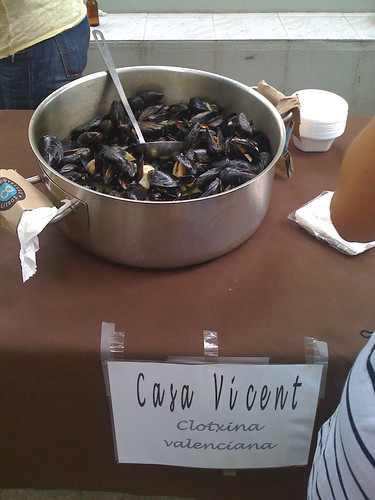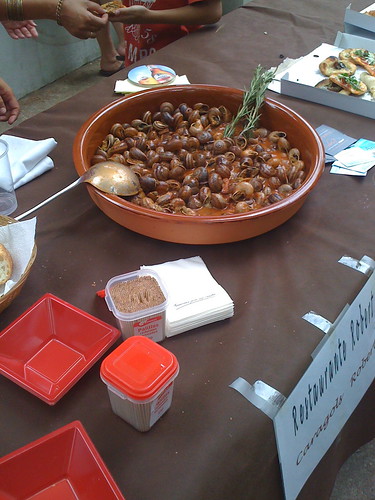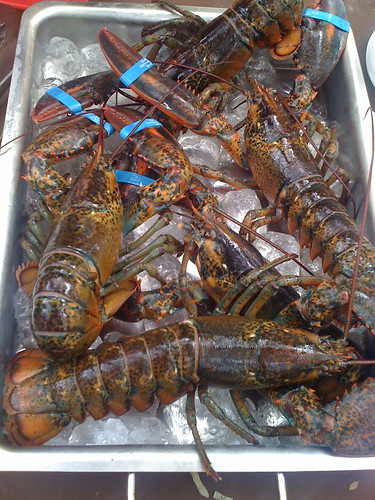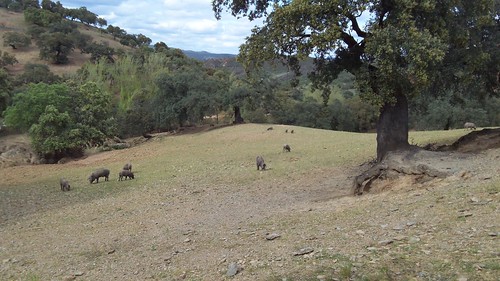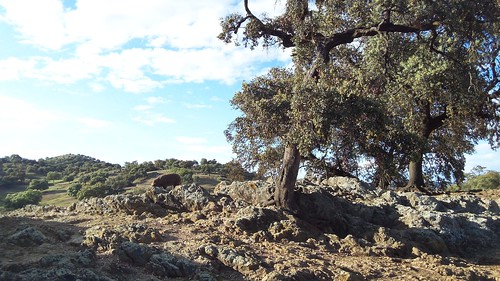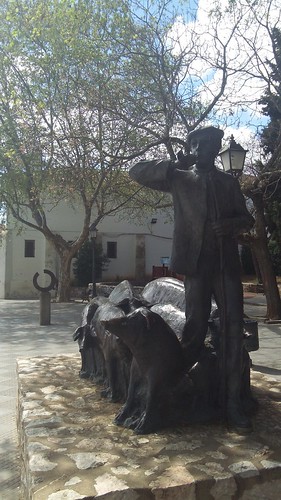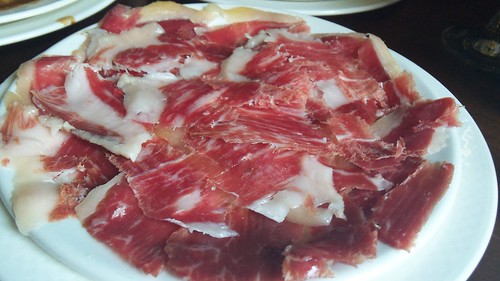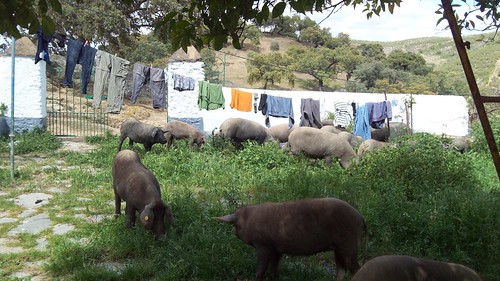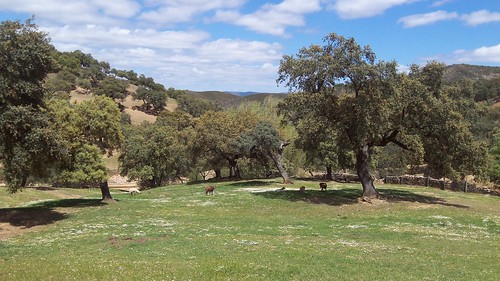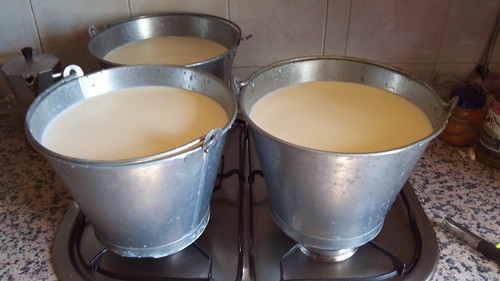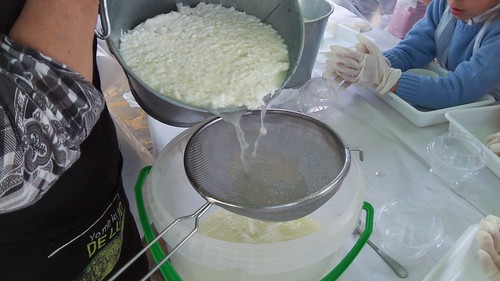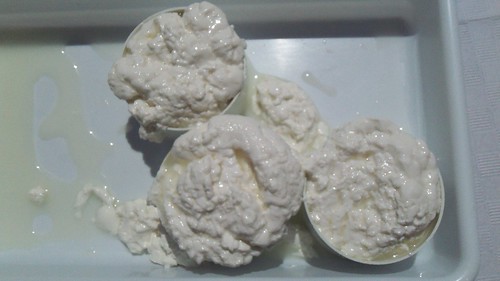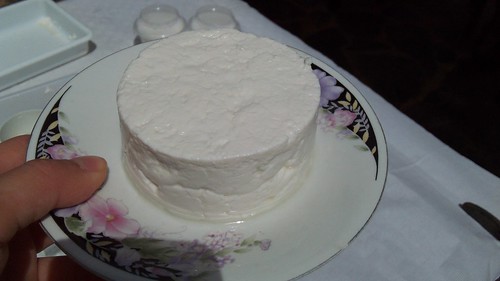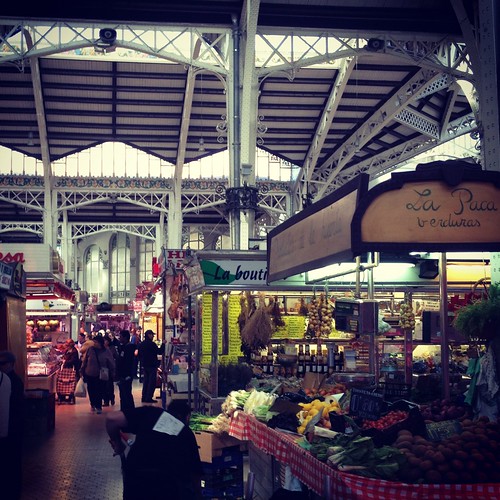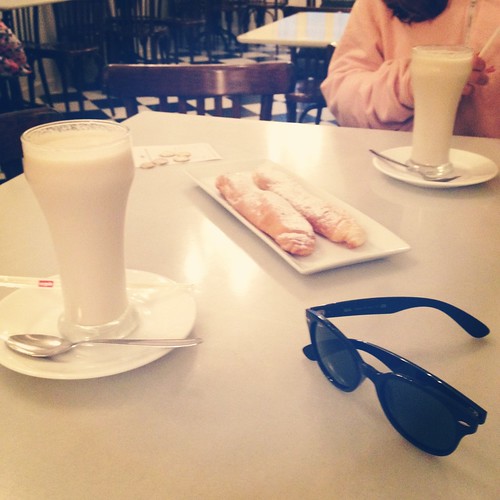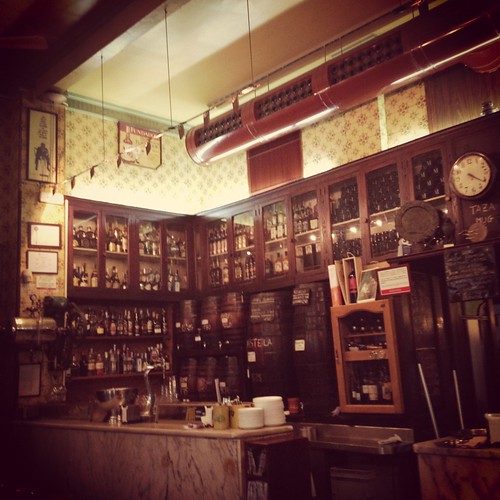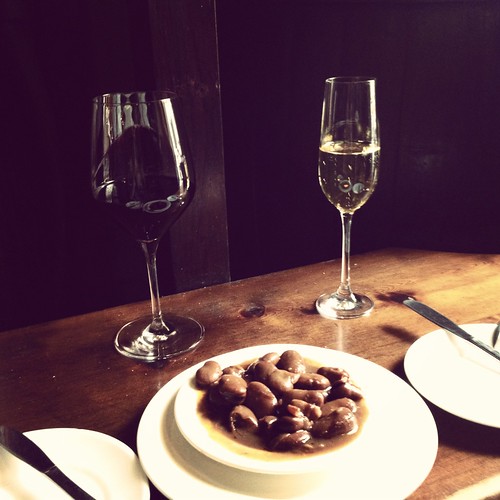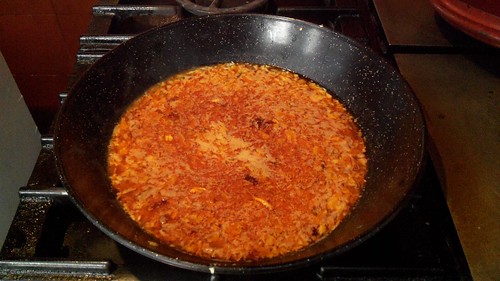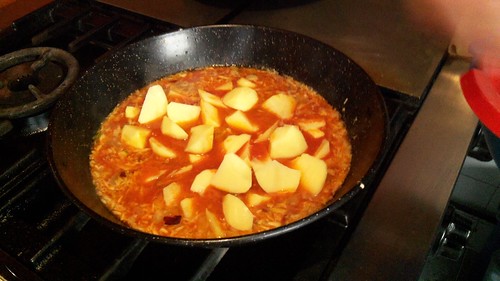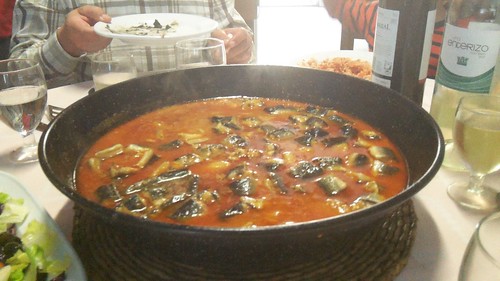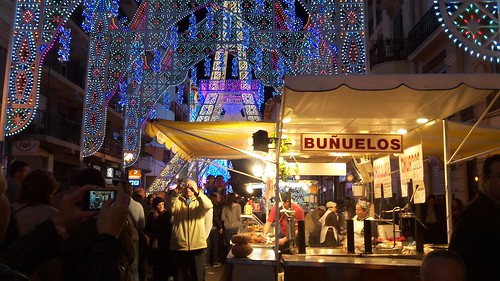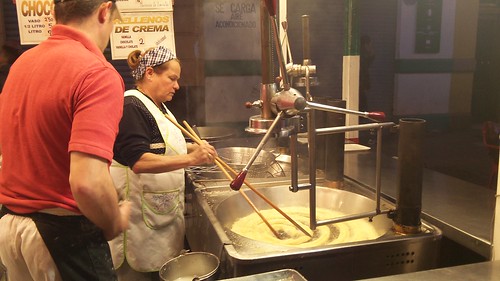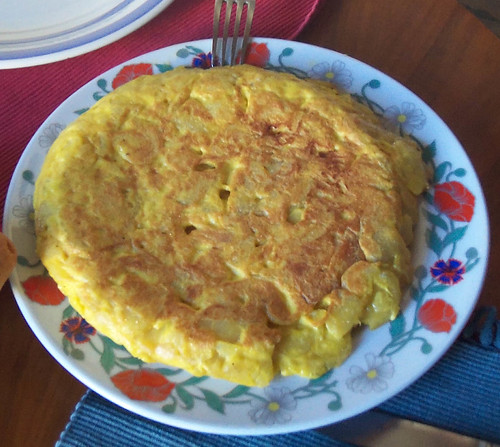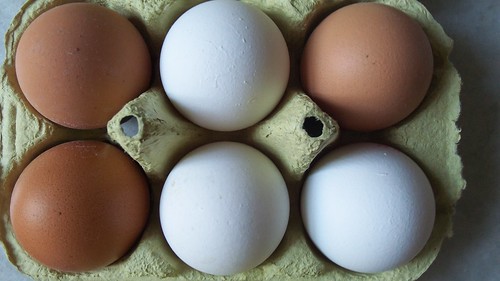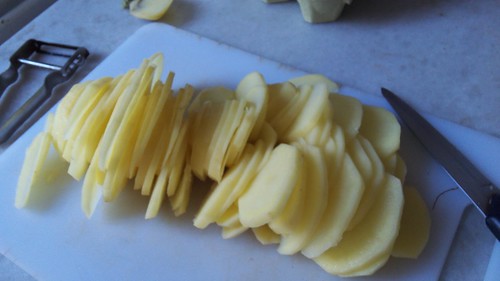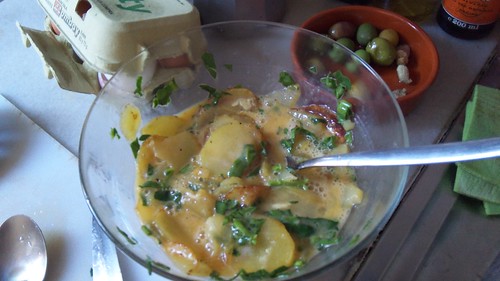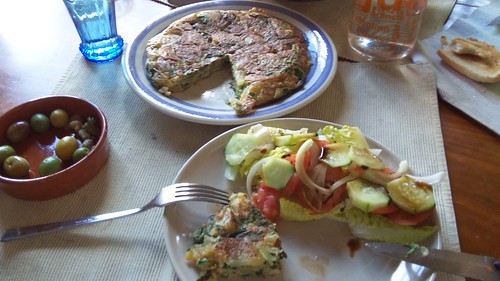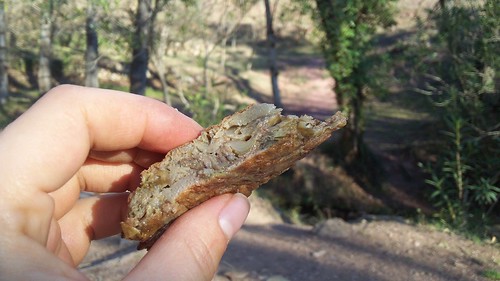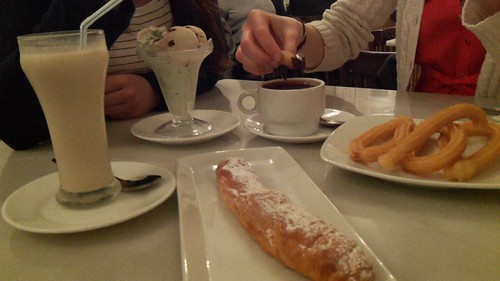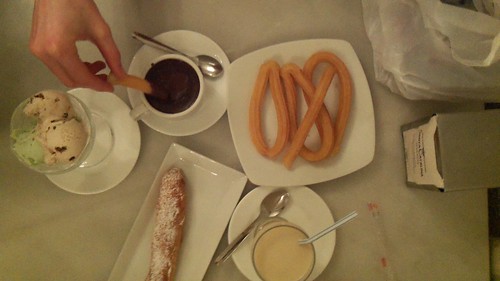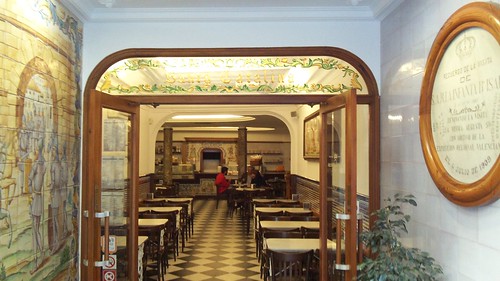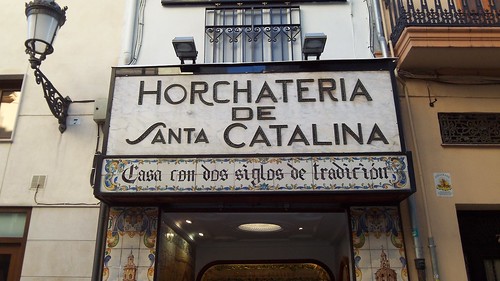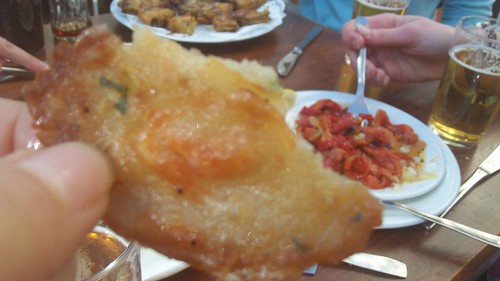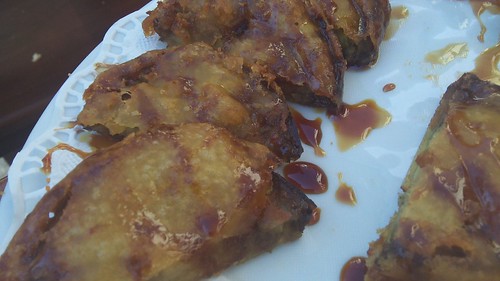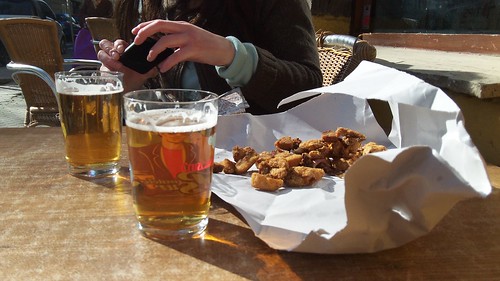Standing
in the Dasi Dasi kitchen, I feel deliciously content. In front of the house,
sweeping through the pine forest, you hit the Mediterranean sea. Open the back
door and the albufera stretches out
ahead, a great lagoon of fresh water teeming with life. It gets better. The
kitchen remains as it stood when their restaurant was open. A huge range with
scarlet tiles, a closet for a fridge, and gigantic pans hanging amongst strings
of cured sausages, bunches of chillies and laurel leaves. We are in El Saler,
just south of Valencia, and whatever you want, from land, sea or lake, it’s
sure to be at its tastiest here.
The
Albufera is the heart of fertility, feeding rice crops for paella, but also
making a home for eels. Maria Angeles Dasi Dasi, invited me to learn how to
cook the dish people drove across Spain to eat in their restaurant, All-i-Pebre (garlic and chilli). As an Essex girl I am no stranger to
eels. I’ve come across them jellied and stewed, on the side of pie and mash,
and let’s just say, we weren’t the best of friends. However I trust Maria
Angeles, she’s fed me some of the best meals of my life in her home and I’d eat
whatever she put in front of me.
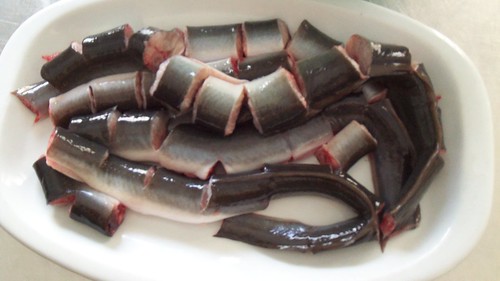
A kilo
and a half of anguillas (eels),
metallically fresh and ready cleaned. It’s not surprising that this is another
dish men like to have a stab at. Like paella you can cook it over a fire, but
the whole process of wrestling and killing live eels might appeal to the alpha
male. Maria Angeles, very wise indeed, plumped for pre-cleaned eels from her local
fish vendor - heads and tails removed and scored into bite sized pieces. They
have one bone that runs throughout the body which is easy to remove when
eating. You get the fine flesh of white fish but without the palaver of
filleting.
The
spearheads of this dish are garlic and chilli, hence the name. When two whole cabezas de ajo (garlic) fall into the pestle and mortar, daughter Maria
Jesus laughingly recounts the infamous complaint of Victoria Beckham that Spain
smelt of garlic. I love it that a bulb of garlic is called the cabeza, literally the head, and the cloves are referred to as deintes, the teeth. Maria Jesus has inherited from her Grandma,
the difficult job of pounding them to a pulp. She tells me that when washing
your hands afterwards you should let the water run over them and resist rubbing
them together as this prevents the smell from lingering. Later she adds a whole
dried red chilli, seeds and all, and blends the heady mixture steadily with
precision and patience.

Meanwhile
Maria Angeles shows me how to cut the nine peeled potatoes. She half cuts and
half rips them, a system which delivers ragged chunks maintaining the best
possible flavour. My Galician friends nod vehemently, that this is the best way
to prepare them. During the war years, potatoes were a staple in Spain and
weren’t cooked with any less passion than fancier food stuffs.
A low
flame is lit and the garlic and chilli pulp is slowly bathed in olive oil,
taking care not to burn it but to endow it with the lightest of golden tans.
Two generous spoons of pimienton dulce
(sweet paprika) is added, painting everything with a deep crimson glow. The
smell at this initial stage is enough to ignite the fiercest of hunger and,
when golden bubbles flutter, add the potatoes swiftly followed by a lid. Let
them semi-cook for 15 minutes.
Then
introduce the silver eels to your smoky golden broth. The nervous systems might
cause the eels to jiggle in the pan, initially unnerving as we looked with
curiosity, but I was pleased to be eating something so fresh. Lower the heat
and cook for a further 40 minutes, until all the ingredients have meshed
together forming a powerful allegiance!
Sitting with the grandfather Jaume we looked through photos of the restaurant in its heyday
before his well earned retirement. He told me how he met people from all over
Europe and how the English liked to have an ice cream first and then a jamon
tortilla. I don’t think they ever got as far as this Valencian speciality.
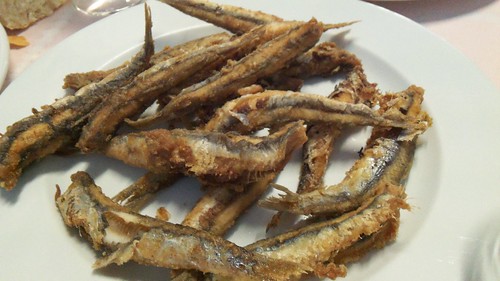
To
tease our stomach Maria Angeles treated us to local delicacies. Lightly fried
moist little boquerones (large fresh
anchovies) disappeared from one plate and tender sepia a la plancha (grilled
cuttlefish) from another - hunks of crusty bread wiped through the ink spilled olive
oil with pleasure. Next the most perfectly selected salad glimmered with
freshness in the centre of the table. We picked into it with our forks,
discussing the best combinations (ripe tomatoes and sweet onions) and praised
the flavour of these crops picked from their allotment. To me this salad, so
simple but accomplished in construction, illustrates that Maria Angeles is sure
of everything she does - the attention and passion shows no sign of fatigue.
Then the dish we had all been waiting
for arrived...
The
smell alone was worth getting the bus for. I had the honour of the first plate,
golden potatoes coated in sumptuously spiked garlic liquor, with the tender
eels on the point of perfection. I was instructed in two methods of eating
them; the first, all in one, pulling the bone out as if it was an olive pip.
You really get a full on taste of the sweet, delicate meat with this method,
soft and infused with flavour but still holding its own. The other way (and my
favourite) is to tear a chunk of bread and mush the eel till the bone falls
away leaving you with a wonderfully flavour-soaked morsel to delight on. We ate
and we ate, and we drank……

I love
that kitchen. I loved that while we were cooking away, members of the family
flowed through, keeping the newsreel of the family turning. Then a pinny donned
neighbour stuck her head in, to ask advice about the lunch she was cooking. It
resembled a Chekhov play - though perhaps the first act, when the melancholia
was yet to set in. And later, as the family gathered to sit and eat together,
it’s hard to imagine a feud could last past the next family lunch, as I
wouldn’t want to miss any of the meals from Maria Angeles kitchen.

